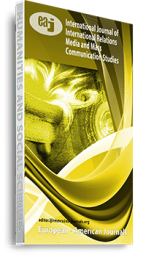The Niger Delta has for some years been the site of major confrontations between the people and the Nigerian government’s security forces, resulting in extrajudicial executions, arbitrary detentions, and draconian restrictions on the rights to freedom of expression, association, and assembly. Since government underutilizes Public Relations in the act of governance, that made minor conflict to escalate to crisis. To proffer solution, Federal government came up with Post-amnesty Programme. Based on this, the study sought to: (i) determine the Public Relations tools and strategies that will be most effective in managing the Amnesty programme, (ii) determine how Public Relations can be used to effectively sustain Post Amnesty in Nigeria. The research design was descriptive survey method. The population of the study was 4,798,519 million youths [15-39years][last Census2006] in Delta State, Bayelsa State and Rivers State. The study made use of qualitative and quantitative data analyses. The sample size was 400 using Taro Yamane formula. Purposive sampling technique was used to select the respondents in each of the states. A pilot study was conducted using split-half method and tested with Spearman Brown. Validity of instruments was measured using content validity, hypothesis two was tested using Friedman Chi-Square, hypothesis three was tested using two-related samples (wilcoxon signed ranks) Z test and hypothesis four was tested using One Sample Kolmogorov-Smirnov (Z) test. Public Relations dialogue method in form of public involvement is the most effective PR tool that will significantly manage the Post Amnesty Programme in Nigeria (Zcal = 3.885 > Zcritical = 1.96, p < 0.05). Public Relations evaluation method significantly maintains the Post Amnesty Programme in Nigeria (X2(friedman)cal = 137.098 > X2calculated = 5.9915, p < 0.05). Public relations would sustain the Niger Delta peace agreement [treaties] beyond Post Amnesty Programme (Zcal = 9.232 > Zcritical = 1.96, p < 0.05. The study concluded by establishing that a combination of the use of public initiative, third-party involvement and conference as forms of Public relations dialogue as well as Public relations evaluation method can enhance and sustain the Post-amnesty Programme. And it recommends the adoption of public relations’ modified multi-track approach which involves all the major parties in the conflict such as the Federal governments, militant groups, State governments, MNOCs, Traditional rulers, Religious leaders, and host communities to work as partners in the peace process.
Keywords: Amnesty Programme, Post-Amnesty, Proactive Strategy, Public Relations

